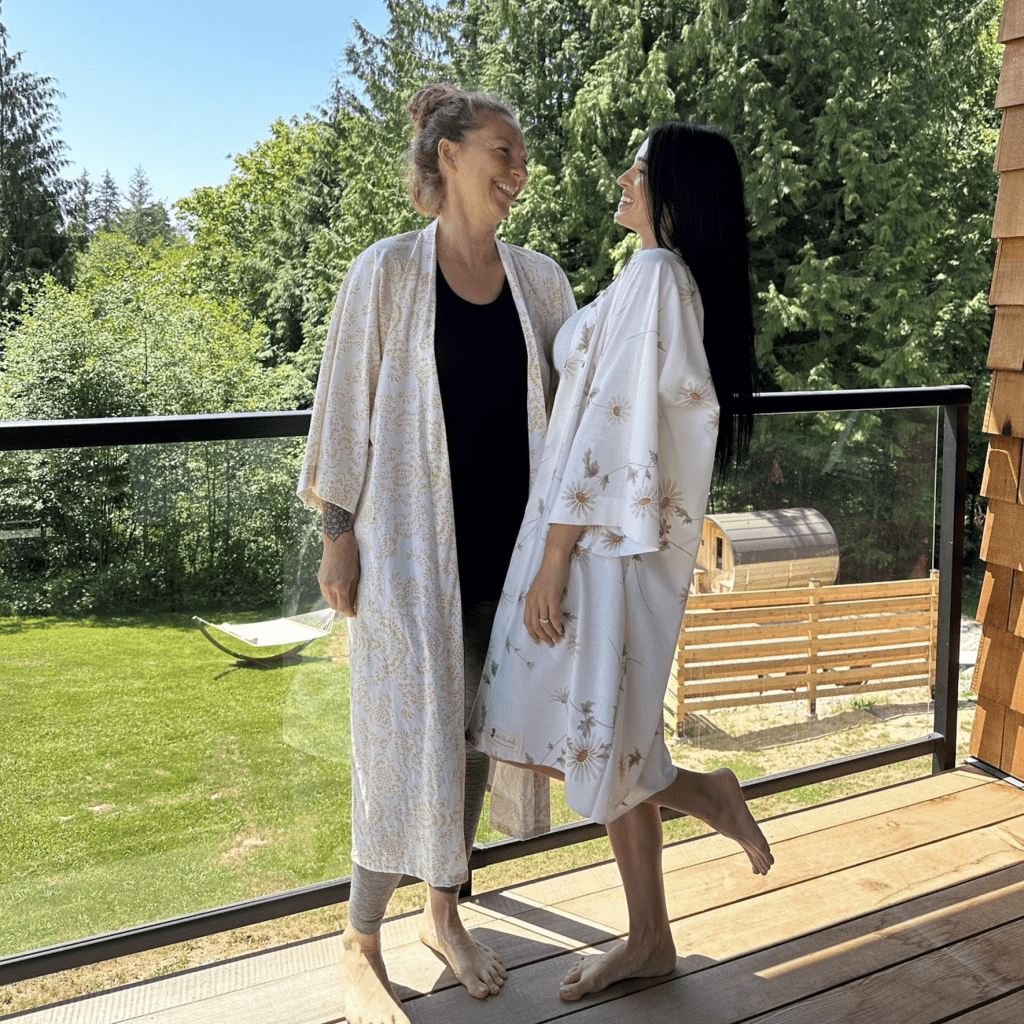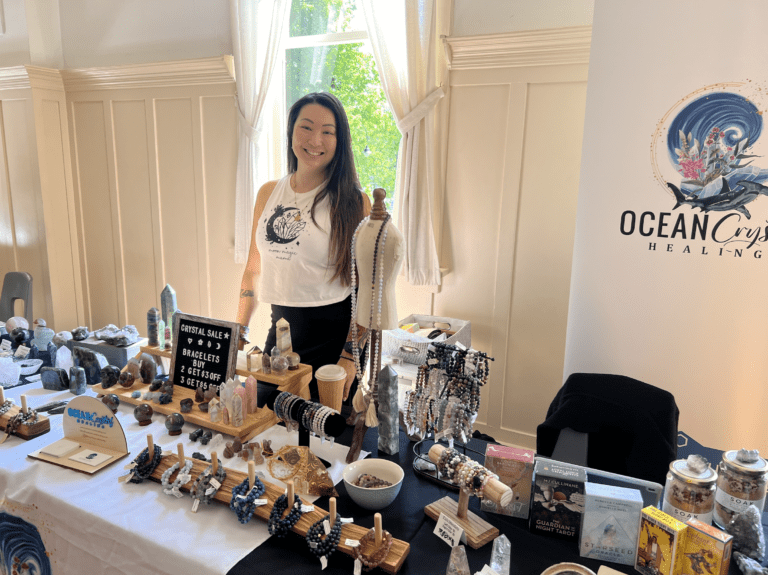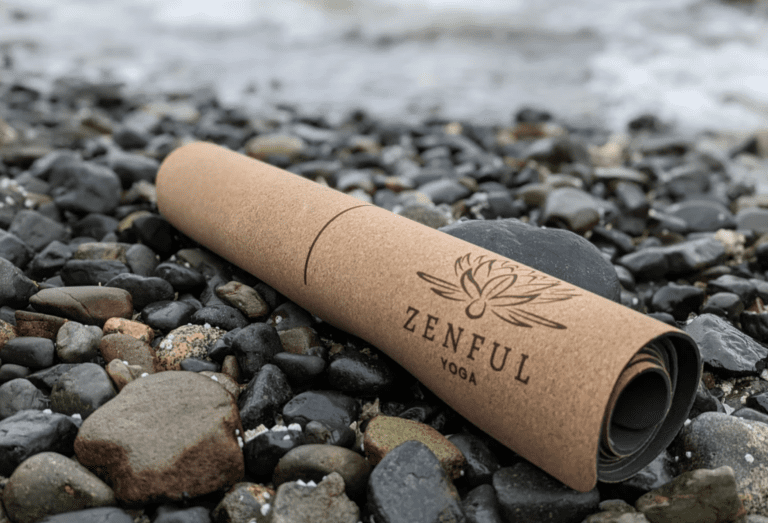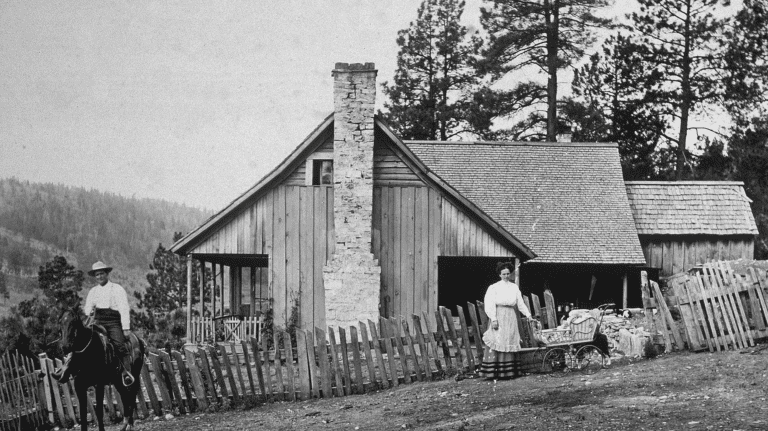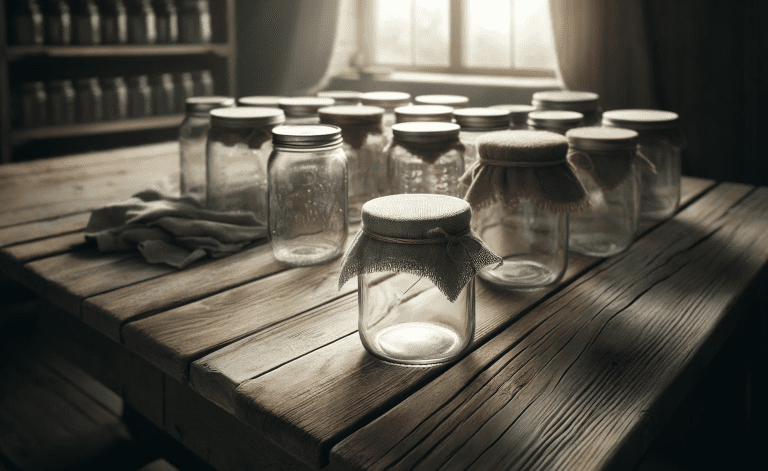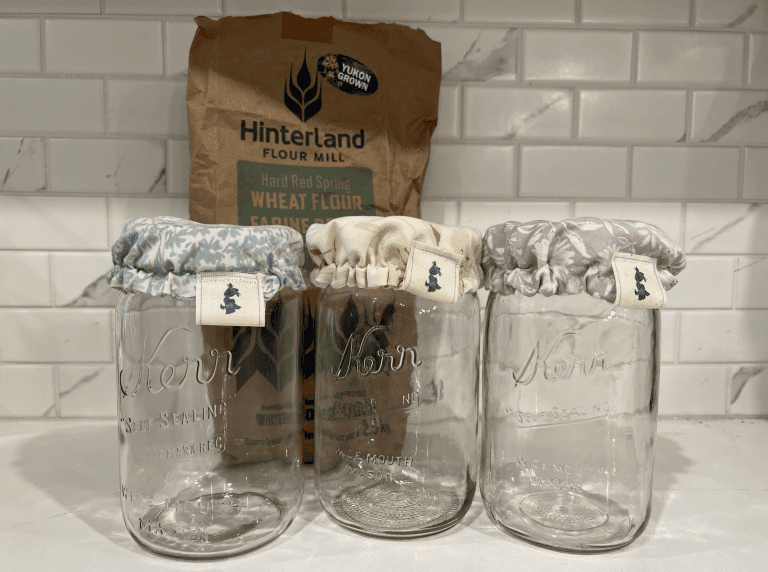Ah, the world of fashion! In all its splendor and glitter, it has been both a subject of admiration and a topic of concern for discerning souls like us. The fast-paced whirlwind of trends might be exciting, but let’s pause and ruminate over the unintentional marks it leaves on our dear Earth.
The Textile Predicament: A Gentle Alarm
In the vast tapestry of the fashion industry, some threads unravel a tale less told. According to the illustrious Ellen MacArthur Foundation, the industry generously contributes about 92 million tons of textiles to our world each year. Now, imagine the grand old châteaus of Europe filled with these textiles. The sad reality is, a rather hefty portion finds its final resting place in the somber confines of landfills, waiting decades if not more, to disintegrate. This is an inheritance from both the carefree cuttings left behind on workshop floors and the ephemeral nature of our current fashion consumption.
The Art of Giving Fabrics a New Dawn
In response to this looming shadow, the world of fashion is embracing a more conscientious approach, turning discarded fabrics into Cinderella stories.
- Zero-Waste Patterns: Think of this as the Marie Kondo of fabric design. Every tiny piece has a purpose, a place, ensuring minimal to zero wastage. It’s an art combined with arithmetic, ensuring every inch is used purposefully.
- Upcycling, the Fashionable Fairy Godmother: Breathing new life into forgotten gowns and discarded garments, upcycling transforms old treasures into modern masterpieces.
- The Allure of Deadstock & Vintage Fabrics: There’s something undeniably romantic about vintage fabrics. They whisper stories of yesteryears and carry an aura of timeless elegance. When fused into today’s designs, they become eclectic pieces of art.
- Remnant Fabric Collections: These are the snippets and snips, the fragments left behind. But in skilled hands, they metamorphose into dainty, limited-edition pieces that carry an essence of exclusivity.
- Harmonious Alliances with Textile Recycling Centers: This is where innovation dances with sustainability. Old fabrics find reincarnation, spun into new threads, ready for another round on the design floor.
The Sweet Perks of Repurposing
- A Toast to Mother Nature: By favoring repurposing, we’re serenading our environment. This means fewer resources tapped, a significant drop in water and energy-guzzling, and a gentle dip in those troublesome greenhouse gas emissions.
- Distinctive, Ethical Couture: Each piece is a sonnet, unique and drenched in individuality. Moreover, embracing repurposed fabrics is akin to supporting fair workspaces, where every hand is valued.
- Fostering a Loving Circular Economy: It’s all about giving and taking in a cycle of love and care. Materials get another dance, another chance, keeping them far from those dreaded landfills.
An Ode to the ‘Second Love Kimono’ by the Graceful Lou Meggiato
Lou, a seasoned gem in the vast world of apparel design, took a step back to reflect on the paths trodden by the industry. Concerned and contemplative, she recognized the unchecked footprints left behind in the name of mass production. So, with a heart full of purpose and hands skilled with years of experience, she embarked on a quest to craft something splendid yet sustainable – the versatile ‘Second Love Kimono’.
Woven from vintage whispers and thrifted tales, every kimono speaks of Lou’s meticulous selection process. Each pattern is a melody, composed and orchestrated by Lou, before being handcrafted into tangible beauty. Due to the nature of the materials, each kimono is a limited edition, a testament to its uniqueness.
Named with love, the “Second Love Kimonos” signifies a fabric’s rebirth, its renaissance from being abandoned to being adored. Beyond being just a garment, it’s a narrative of sustainability and passion, a bridge between the past and the present.
Shall We Chat Over a Cup of Tea?
Are you as enchanted by the ‘Second Love Kimono’ as I am? Fancy a heart-to-heart about patterns, fabrics, and everything delightful? Lou is just a delightful message away, eager to discuss her treasures and even customize one, just for you. Join us in this sustainable soiree and wrap yourself in stories and elegance. Why not drop Lou an email, and maybe the next story whispered by a ‘Second Love Kimono’ could be yours?
Email hello@wildbluebell.ca for more info and product availability
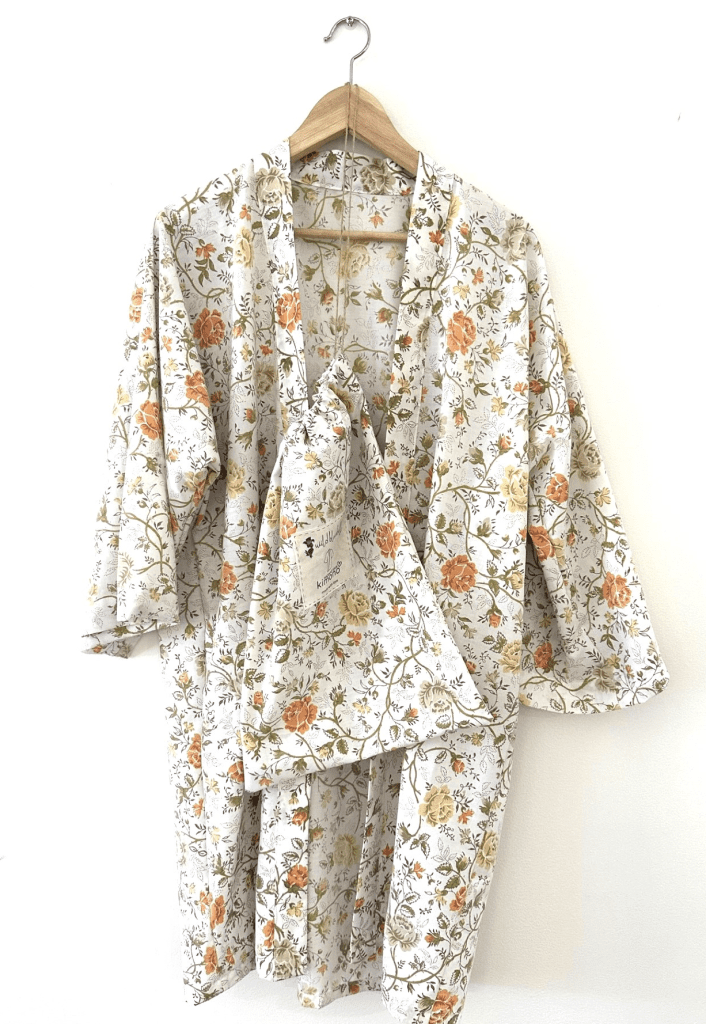
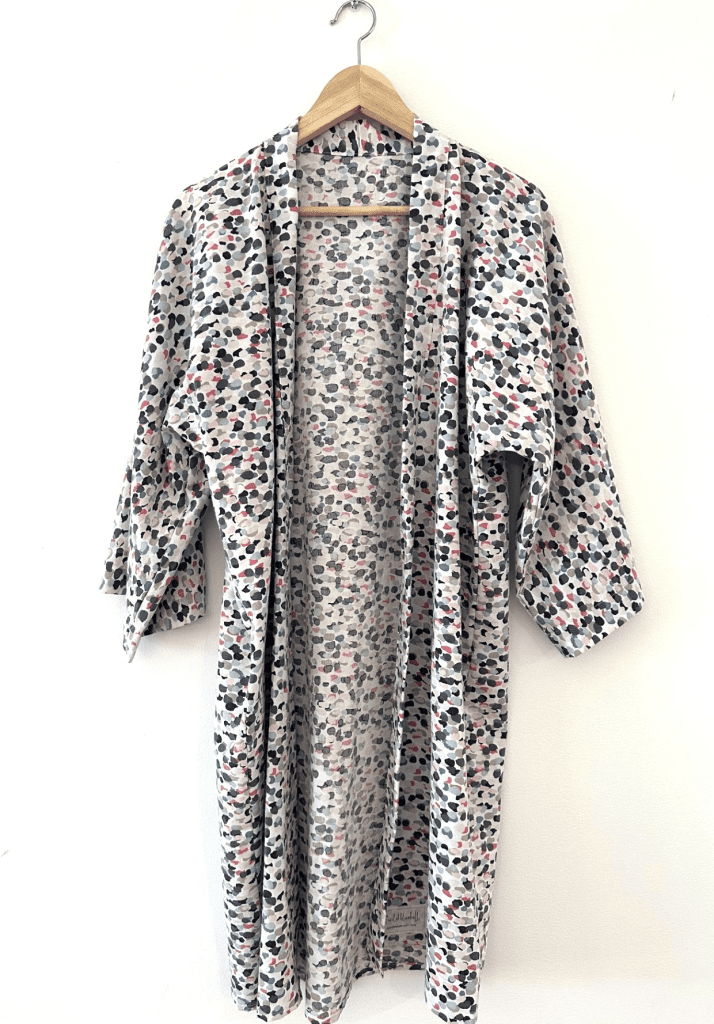
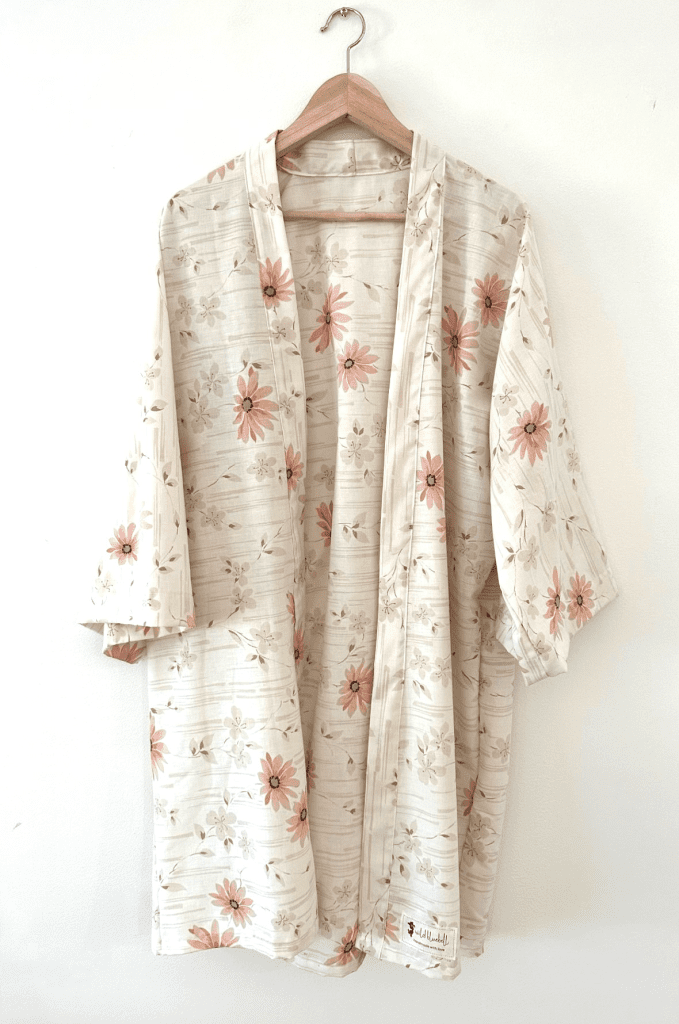
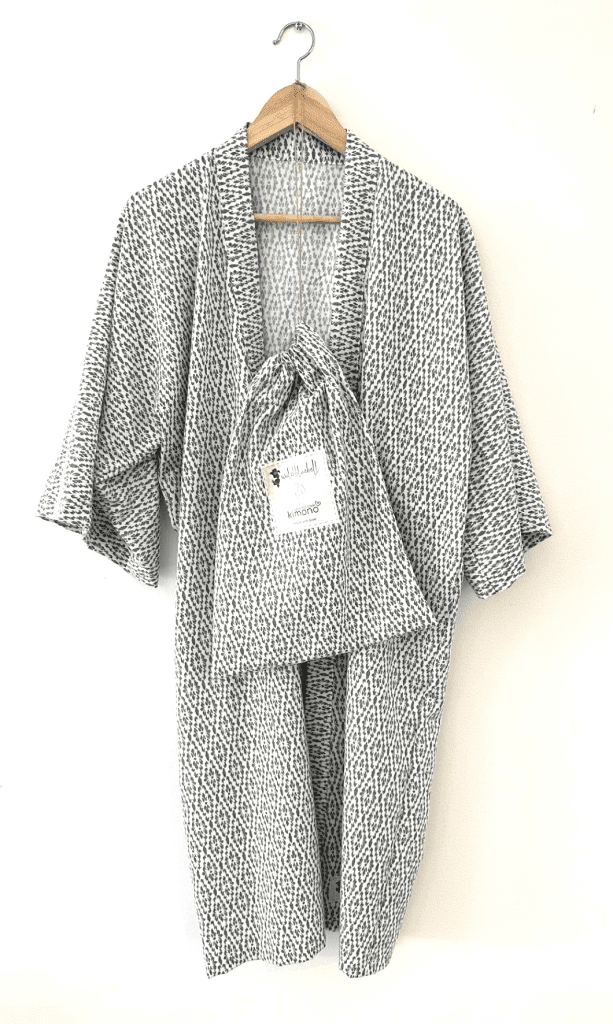
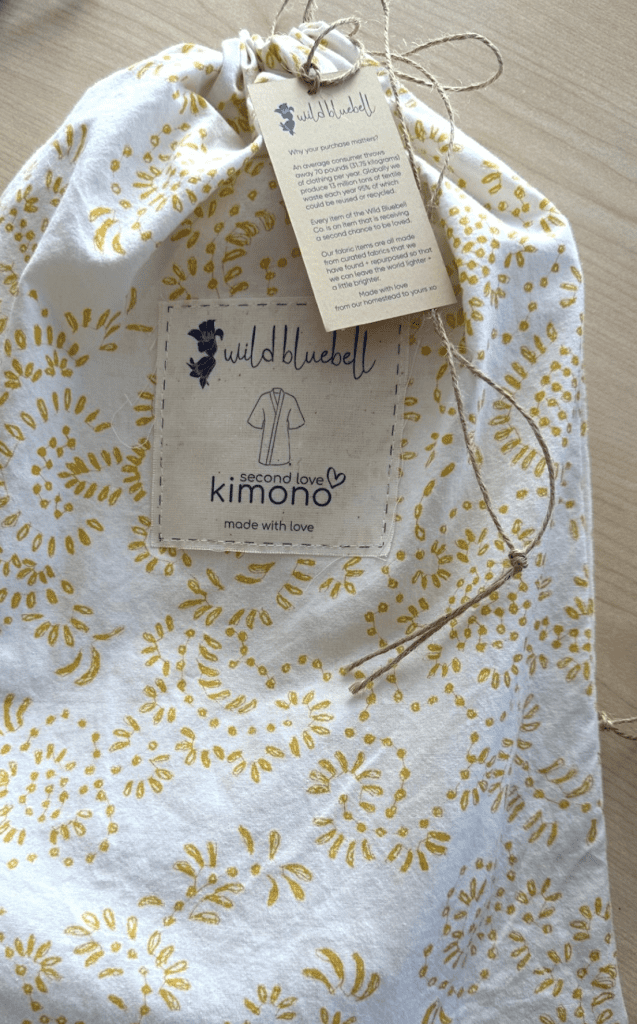
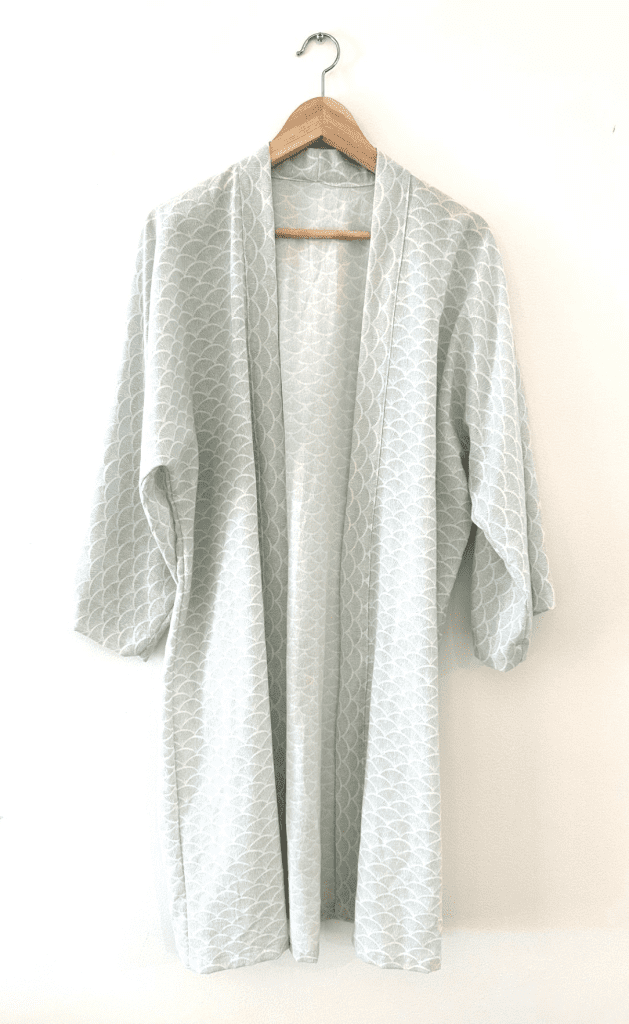
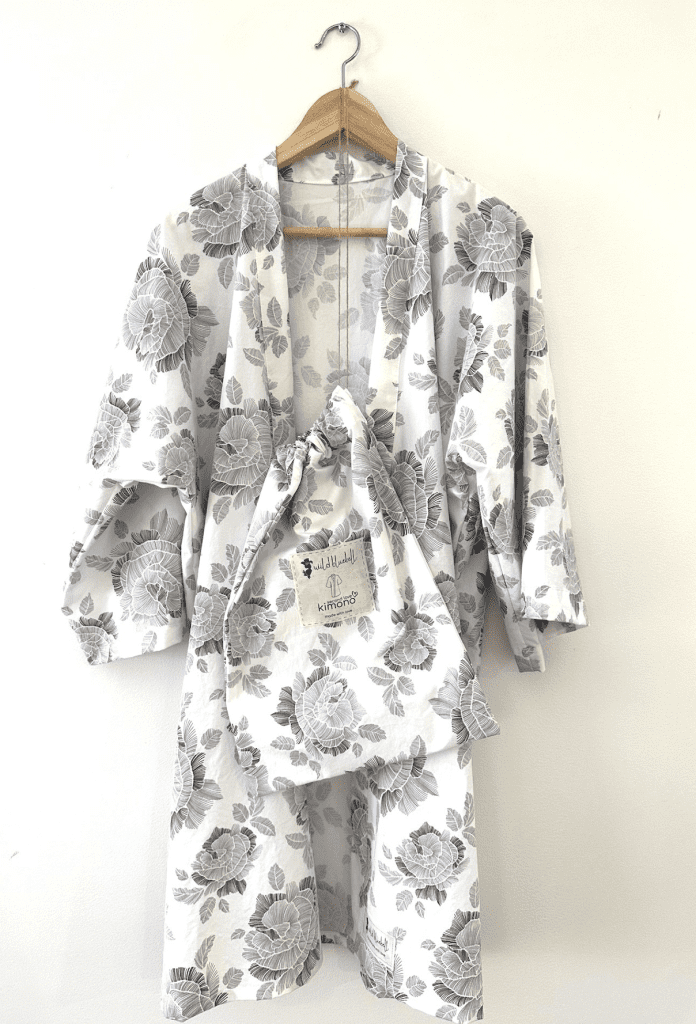
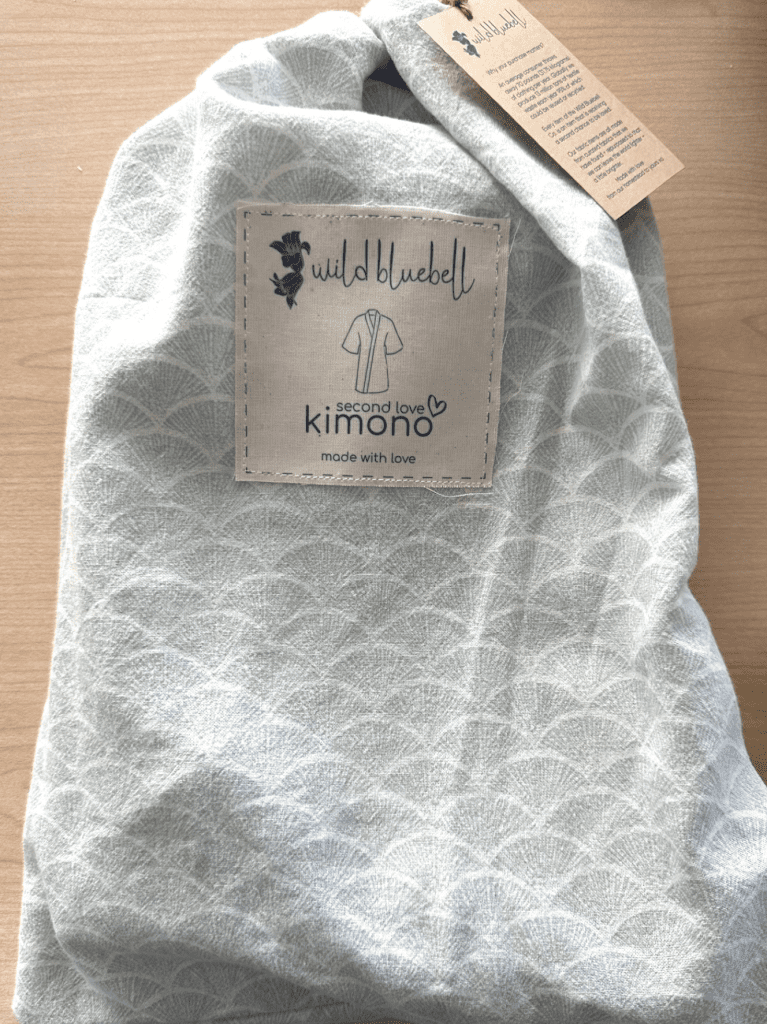
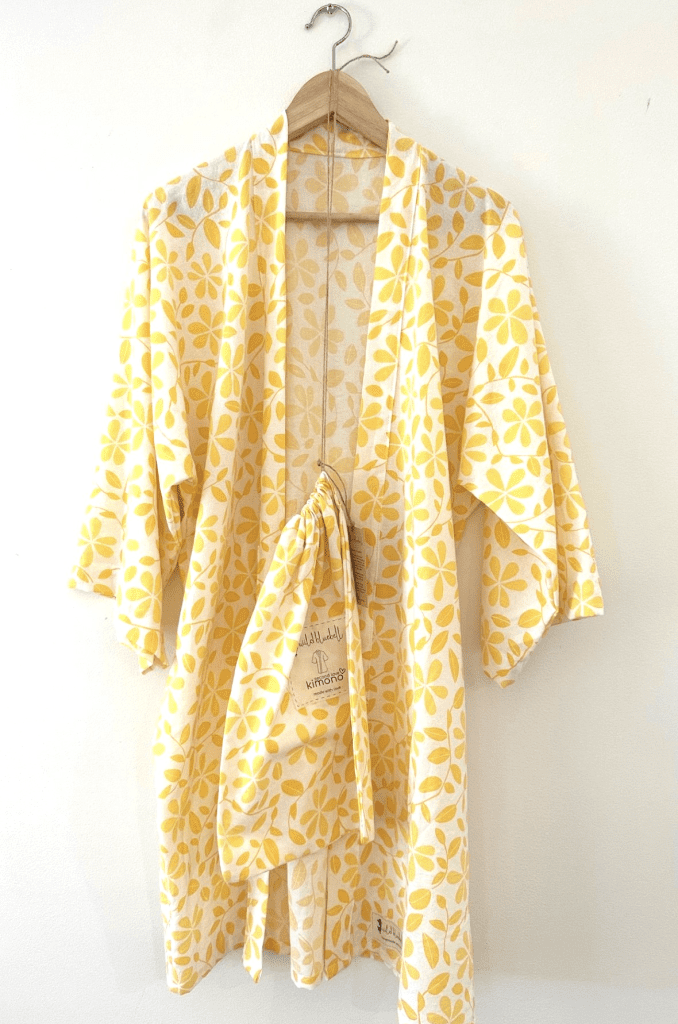
Origins of the Kimono
The word ‘kimono‘ is as evocative and versatile as the garment itself. Originating from Japan, “kimono” simply means “thing to wear” with ‘ki’ translating to ‘wear’ and ‘mono’ meaning ‘thing’. This traditional attire has been an integral part of Japanese culture for over a thousand years.
The Inventors
It’s challenging to pinpoint an exact individual or group who “invented” the kimono. The kimono evolved over time, influenced by various factors, from the clothing worn by the Chinese during the Han Dynasty to Japan’s indigenous styles. Over centuries, this amalgamation of influences refined into the kimonos we recognize today.
The Symbolism and Wearing of Kimonos
Kimonos are more than just clothing in Japan; they are an art, a representation of history, status, and occasion. Traditionally made from silk, kimonos are adorned with intricate patterns and designs that can signify various meanings.
- Occasion: There are kimonos for everyday wear, formal occasions, tea ceremonies, and festivals. Each has its unique style and flair.
- Seasons: The patterns on the kimonos can also be representative of different seasons. Cherry blossoms might depict spring, while autumn might be illustrated with maple leaves.
- Life Events: There are kimonos for celebrations like weddings, coming-of-age ceremonies, and funerals.
The act of wearing a kimono is meticulous, involving various layers and accessories. The order in which these layers are worn, the way the fabric is folded, and even the choice of obi (a wide belt) can vary based on the occasion and the wearer’s status or age.
A Garment for All
While kimonos might often be associated with women, especially in contemporary fashion outside Japan, they are very much a unisex garment. Men’s kimonos tend to be subtler in design, primarily using muted colors and minimalistic patterns, as opposed to the vibrant and elaborate designs found on many women’s kimonos.
Repurposed Vintage Fabric: A Modern Touch to a Timeless Attire
Incorporating repurposed vintage fabric into kimonos is like weaving history and sustainability into every fold. Vintage fabrics carry stories of eras gone by, making each kimono not just a garment, but a conversation piece. The essence of vintage materials guarantees that no two kimonos can ever be identical, enhancing their uniqueness.
Moreover, the choice to use repurposed fabric is a conscious step towards sustainability. With fast fashion leaving an indelible mark on our environment, repurposing vintage fabric for something as cherished as kimonos is an ode to mindful living. It reduces waste, promotes a circular economy, and offers a fresh, sustainable take on a traditional garment.
The Unparalleled Charm of Vintage Kimonos
There’s something ethereal about wearing a kimono made of vintage fabric. It’s not just about the style or the sustainability, but the tapestry of tales it brings along. Imagine donning a kimono that could’ve once been a ball gown from the 1940s or a curtain that witnessed secret lovers’ trysts. The possibilities are endless, the stories boundless, and the uniqueness unparalleled.
In essence, the kimono is more than just a piece of clothing; it is a reflection of history, society, art, and personal expression. Whether made traditionally or with repurposed vintage fabric, it stands as a symbol of timeless elegance, resonating with both the past and the present.
Wild Bluebell Homestead is a charming hobby farm located in Abbotsford that offers a range of hand-made artisanal products, curated vintage furniture, sourdough bread, and other homemade items. The homestead is dedicated to creating unique and high-quality products that are beautiful, functional, and long-lasting, plus each item is carefully crafted with attention to detail. Customers can expect a warm and welcoming experience and a range of products that are perfect for adding a touch of rustic charm to any home.

